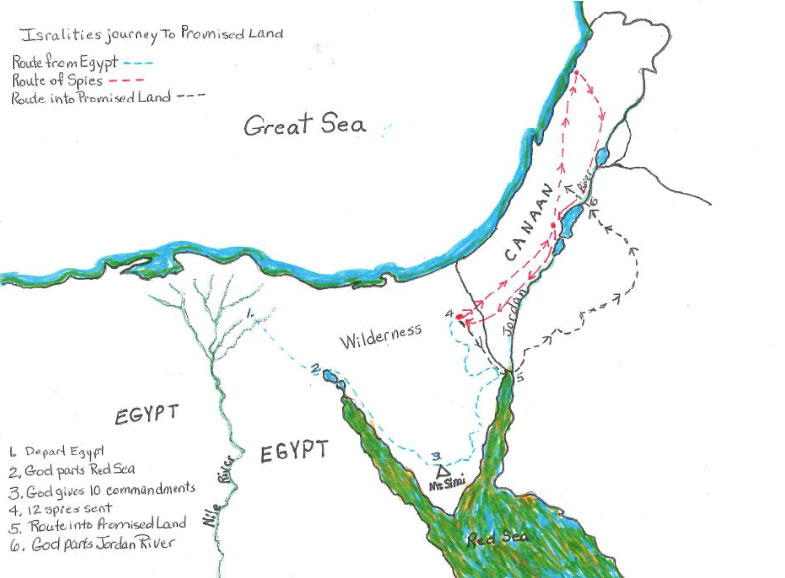Bible Study
Summit Views: Exodus
Purpose:
To show how God redeemed His people, revealed His Law and dwelled among them, that all might know He is God.
Gospel Connection:
| The Israelites were enslaved to the Egyptians but the LORD heard their cries for help. He delivered them out of Egypt with His mighty arm and they witnessed His salvation with a powerful experience of redemption. A spotless lamb was slaughtered in place of the firstborn, and judgement was avoided as those with the blood of the lamb upon their doorposts were passed over and redeemed. | As sinners, we are enslaved to sin, and without God’s intervention, will face judgment. The Lord however sent His only Son, the spotless “Lamb of God, who takes away the sin of the world!” (John 1:29). Jesus Christ “our Passover lamb” (1 Cor. 5:7), shed His blood on behalf of sinners, who by faith in Him, would not perish, but receive eternal life. Redemption is found through the precious blood of Christ (1 Peter 1:18-19; Ephesians 1:7). |
| The old covenant was confirmed with sacrifices that shed the blood of animals (Exodus 24). The Israelites participated in a covenant ceremony involving sacrifices that shed the blood of animals (Exodus 24). | The new covenant was inaugurated with the shed blood of Jesus (Matt 26:28, Heb. 8-10). Through the once and for all sacrifice of Jesus, believers also participate in a covenant meal that pictures the redemption of sinners. |
| After being delivered out of Egypt, The LORD gave His people instructions for building the tabernacle that the Lord might dwell among them. | Through faith in Christ, the LORD delivers sinners out of bondage and into relationship with Him as the Holy Spirit dwells in them. |
Summary Outline:
I. Redemption (1-18)
A. God sends Moses (1:1-7:13)
B. Plagues, Passover and Exodus (7:14-15:21)
C. Journey to Mount Sinai (15:22-18:27)
II. Law (19-40)
A. Giving of the Law from Mount Sinai (19:1-23:33)
B. God’s Covenant Confirmed (24)
C. Tabernacle and the Presence of God (25-40)
Summary message:
The story picks up where Genesis left off. God has covenanted with Israel to make them into a great nation, bring them into a land and bless the world through them. The beginning of Exodus shows how they have become a great people from the twelve sons of Jacob. However there was a new king of Egypt and he saw their increasing numbers as a threat and made the Israelites slaves while also attempting to kill their baby sons. One of these baby boys was rescued from the Nile and raised in Pharaoh’s household. Moses whose name describes his own deliverance out of the river, eventually fled after killing an Egyptian who was mistreating a Hebrew.
Now living as a shepherd, the Lord appears to him, revealing His covenantal name, and sending him to Pharaoh for the release of His people. Though Pharaoh refuses, the Lord sends plagues climaxed by the tenth and final plague of the death of the firstborn. The Lord however would passover the firstborn of Israel and lead them out of Egypt in ways that only He could do. After being rescued, Israel came to Mount Sinai where God gave them His law, revealing to them His holiness and special covenant that they might live as a kingdom of priests and holy nation before Him. A tabernacle was constructed where the LORD would dwell among them and be their God as He leads them to the land of promise.
Author:
Scripture and tradition point to Moses as the author
Historical context: [4], [5]
Unification of Upper and Lower Egypt by Pharaoh Menes
-
- First pharaoh
The Old Kingdom in Egypt
-
- Great pyramids
First Intermediate Period in Egypt 2200-2050 B.C.
-
- Decline
The Middle Kingdom in Egypt 2050-1800 B.C.
-
- Enlarged borders, centralized rule; 12th dynasty – Golden age; affluent era
- Time of Joseph
Second Intermediate Period in Egypt 1800-1570 B.C.
-
- Decline
- Hyksos invasion and rule (1730 – 1570)
Early New Kingdom Period 1570-1300
-
- Ahmose I
- Amenhotep I (1546 to 1526)
- Thutmose I (1526- 1512); Mose’s birth (1526); Thutmose I daughter Hatshepsut may have found Moses in the basket
- Thutmose II (1512-1504)
- Thutmose III/Hatshepsut (1504 – 1482)
- Thutmose III (1504 – 1450); Likely the Pharaoh of Israelite oppression
- Amenhotep II (1450-1425); Likely the Pharaoh of the Exodus (1446)
- Thutmose IV (probably the younger son as the firstborn would have died, Exodus 12:29)
Amenhotep IV and Monotheism 1361-1344 B.C.
Reign of Tutankhamon 1333-1323 B.C.
Later New Kingdom in Egypt 1300-1090 B.C.
Egypt Falls to Rome 30 B.C.
Date of the Exodus:
Early Date: 1446 BC;
Late Date: 13th Century BC
Key People/places/passages:
People: Pharaoh King of Egypt, Moses, Midian, Reul/Jethro, Zipporah, Gershom, Aaron, Miriam, Bezalel, Oholiab
Places: Nile River, Egypt, Horeb, Pithom, Raamses, Succoth, Midian, Mount Sinai, the wilderness of Shur, Marah, Elim, Wilderness of Sin, Rephidim, Rock at Horeb, Massah, Meribah, Wilderness of Sinai
Passages: Psalm 77:10-20; 78; 105:24-45; 106; Acts 7:17-44; 1 Corinthians 5:7; Hebrews 11:23-29
Themes/ Keywords:
LORD, holiness, deliver/rescue, out of, Passover, redeem, kingdom of priests, holy nation, law, Sabbath, covenant, tabernacle, Levites, holy, priests, Feast of Unleavened Bread, Feast of Weeks, Feast of Ingathering.
Plagues: (7:14-12:32)
- Water to Blood (7:14-25)
- Frogs (8:1-15)
- Gnats (8:16-19)
- Flies (8:20-32)
- Livestock died (9:1-7)
- Boils (9:8-12)
- Hail (9:13-35)
- Locusts (10:1-20)
- Darkness (10:21-29)
- Death of Firstborn (12:29-32)
Family of Moses and Aaron
(2:1; 6:14-30; 15:20; 28:1-4; Numbers 26:58-62; 1 Chronicles 6:1-3; 1 Chronicles 23:12-20)
Ten Commandments: (20:1-17)
- “You shall have no other gods before me” (20:3)
- “You shall not make for yourself a carved image…” (20:4-6)
- “You shall not take the name of the LORD your God in vain…”(20:7)
- “Remember the Sabbath day, to keep it holy…” (20:8-11)
- “Honor your father and your mother,…” (20:12)
- “You shall not murder.” (20:13)
- “You shall not commit adultery.” (20:14)
- “You shall not steal” (20:15)
- “You shall not bear false witness…” (20:16)
- “You shall not covet…” (20:17)
Expanded Summary Outline:
I. Redemption (1-18)
1. God Hears His people and send Moses (1:1-7:13)
2. Plagues, Passover and Exodus (7:14-15:21)
3. Testing, Quarreling and Journey to Mount Sinai (15:22-18:27)
II. Law (19-40)
1. Giving of the Law from Mount Sinai (19:1-23:33)
2. God’s Covenant Confirmed (24)
3. Instructions for Tabernacle and Priests (25:1-30:38)
4. Empowered workers, Sabbath Rest and Tablets of stone (31:1-18)
5. Rebellion, Broken Tablets and Death (32:1-35)
6. The Lord’s presence and renewed tablets (33-34)
7. Moses instructs Israel about Sabbath Rest (35:1-3)
8. Tabernacle Contributions and Construction (35:4-40:33)
9. Tabernacle filled with the Glory of the Lord (40:34-38)
Map: [6]
Detailed Outline:
I. GOD SENDS MOSES (1:1-7:13)
A. Israel’s predicament and Moses’s involvement (1:1-2:22)
1. Israel multiplies and Pharaoh treats them harshly (1)
2. Birth, Rescue, and Exile of Moses (2:1-22)
B. God Hears His people and Speaks to Moses from the Burning Bush (2:23-4:17)
1. God Hears Israel’s cries (2:23-25)
2. God Speaks to Moses from the Burning Bush (3)
3. The LORD provides signs and a speaker for Moses (4:1-17)
C. The Lord Sends Moses and Aaron before Pharaoh (4:18-7:13)
1. Moses returns to Egypt (4:18-31)
2. Pharaoh’s refusal and harsher enslavement (5)
3. The LORD remembers His Covenant and promises deliverance (6:1-13)
4. Family of Moses and Aaron (6:14-27)
5. The LORD’s instructions and Moses and Aaron before Pharaoh (6:28-7:13)
II. PLAGUES, PASSOVER AND EXODUS (7:14-15:21)
A. Plagues One to Nine (7:14-10:29)
1. First Plague: Water to Blood (7:14-25)
2. Second Plague: Frogs (8:1-15)
3. Third Plague: Gnats (8:16-19)
4. Fourth Plague: Flies (8:20-32)
5. Fifth Plague: Livestock died (9:1-7)
6. Sixth Plague: Boils (9:8-12)
7. Seventh Plague: Hail (9:13-35)
8. Eighth Plague: Locusts (10:1-20)
9. Ninth Plague: Darkness (10:21-29)
B. Warning, Instructions and Final Plague (11:1-12:32)
1. Warning of Final Plague (11:1-10)
2. Instructions for Passover and Future Memorial (12:1-28)
3. Tenth Plague: Death of Firstborn (12:29-32)
C. The Exodus (12:33-13:16)
1. The LORD Leads His People out of Egypt (12:33-42)
2. Future Passover Instructions (12:43-50)
3. Consecration, Remembrance, and Redemption (13:1-16)
D. Presence of God and Parting of the Sea (13:17-15:21)
1. Pillars of Cloud and Fire (13:17-22)
2. Crossing the Red Sea (14)
3. The Song of Moses and Israel (15:1-21)
III. JOURNEY TO MOUNT SINAI (15:22-18:27)
A. Testing, Quarreling, and the Journey to Mount Sinai (15:22-18:27)
1. Water goes from Bitter to Sweet (15:22-27)
2. Bread and Meat Provisions (16:1-35)
3. Israel Quarrels and Tests the Lord (17:1-7)
4. Israel’s conflict with Amalek (17:8-16)
5. Moses reunites with family and Receives Jethro’s Advice (18:1-27)
IV. GIVING OF THE LAW FROM MOUNT SINAI (19:1-23:33)
A. The LORD speaks to Moses on Mount Sinai (19:1-25)
1. Israel camps before the mountain and the LORD instructs (19:1-9)
2. Preparations for Meeting with the LORD (19:9-25)
B. The Ten Commandments and the Law (20:1-33)
1. Ten Commandments (20:1-21)
2. Idols and Altars (20:22-26)
3. Laws about Slaves and Injured People (21:1-32)
4. Laws about restitution (21:33-22:15)
5. Laws about Justice (22:16-23:9)
6. Work, Feasts and Sacrifice (23:10-19)
7. Instructions for entering the Land (23:20-33)
V. GOD’S COVENANT CONFIRMED (24:1-18)
A. Agreement and Sacrifice confirm the covenant and the LORD Calls Moses up to receive written
tablets (24:1-18)
1. Agreement with words, sacrifice, and blood of the covenant (24:1-8)
2. Leaders meet with God, Moses ascends the mountain and the Glory of the LORD dwells
VI. THE TABERNACLE AND PRESENCE OF GOD (25-40)
A. Instructions for Tabernacle and Priests (25:1-30:38)
1. Instructions for making the tabernacle and items within it (25-27)
a. Contributions for the Tabernacle (25:1-9)
b. Ark, Mercy Seat, and Cherubim (25:10-22)
c. Table for Bread (25:23-30)
d. Lampstand (25:31-40)
e. Materials to construct the tabernacle (26:1-37)
f. Altar (27:1-8)
g. Court of the tabernacle (27:9-19)
h. Oil for the Lamp (27:20-21)
2. Instructions for Priests and additional items within tabernacle (28:1-30:38)
a. Priestly Clothes (28:1-43)
b. Consecration and Ordination of Priests (29:1-46)
c. Altar of Incense (30:1-10)
d. Census Tax (30:11-16)
e. Bronze Basin (30:17-21)
f. Anointing Oil and Incense (30:22-38)
B. Empowered workers, Sabbath Rest and Tablets of Stone (31:1-18)
1. God-given capability for tabernacle work (31:1-11)
2. Sabbath Rest (31:12-17)
3. Tablets of Stone (31:18)
C. Rebellion, Broken Tablets and Death (32:1-35)
1. Israel rebels by worshiping a golden calf (32:1-6)
2. The Lord responds and relents (32:7-14)
3. Moses’ response (32:15-29)
4. Moses’ plea and the Lord’s Judgment (32:30-35)
D. The Lord’s presence and renewed tablets (33-34)
1. Command to leave (33:1-6)
2. The Lord speaks to Moses face to face (33:7-11)
3. The Lord’s presence and glory (33:12-23)
4. Covenant Renewal (34:1-28)
5. Moses’ return and shining face (34:29-35)
E. Moses instructs Israel about Sabbath Rest (35:1-3)
F. Tabernacle Contributions and Construction (35:4-40:33)
1. Willing hearts contributing (35:4-29)
2. Willing hearts constructing (35:30-36:38)
3. Ark, Mercy Seat, and Cherubim (37:1-9)
4. Table (37:10-16)
5. Lampstand (37:17-29)
6. Altar of Incense (37:25-29)
7. Altar of Burnt Offering (38:1-7)
8. Bronze Basin (38:8)
9. The Court (38:9-20)
10. Records for the tabernacle (38:21-31)
11. Garments for the Priests (39:1-31)
12. Tabernacle Materials Completed (39:32-43)
13. Erecting the tabernacle (40:1-33)
G. The Glory of the LORD filled the Tabernacle (40:34-38)
1. The Glory of the LORD (40:34-35)
2. Traveling with the Tabernacle (40:36-38)
[1] John D. Hannah. Bible Knowledge Commentary, Ed. John F. Walvoord and Roy B. Zuck, Colorado Springs, CO p. 105.
[2] Charles Dyer and Eugene Merrill. Nelson’s Old Testament Survey. Ed. Charles R. Swindoll & Roy B. Zuck. Nashville: Thomas Nelson, Inc., 2001, p. 3, 40-41.
[3] John D. Hannah. Bible Knowledge Commentary, Ed. John F. Walvoord and Roy B. Zuck, Colorado Springs, CO p. 105.
[4] Egyptian era titles with dates used from Veritas Press History Cards, 2012, Veritas Press, p. 8-10; 17, 23, 25-26, 45, 49-50, 125.
[5] Descriptions under titles used or adapted from John D. Hannah. Bible Knowledge Commentary, Ed. John F. Walvoord and Roy B. Zuck, Colorado Springs, CO p. 105 – 107.
[6] Hand drawn map source unknown and is not to scale. The traditional exodus route and location of Mount Sinai are shown.
Bible Study Publications to Download
-
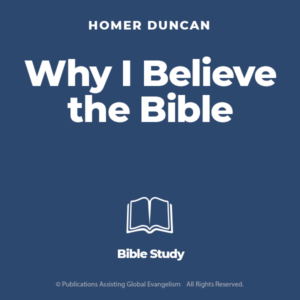
Why I Believe the Bible
$0.00 -
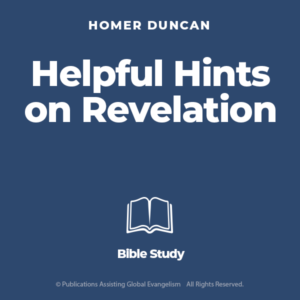
Helpful Hints on Revelation
$0.00 -
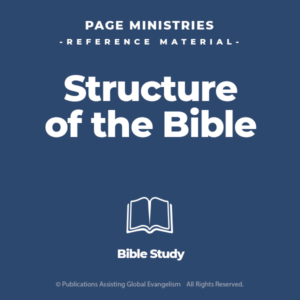
Structure of the Bible
$0.00 -
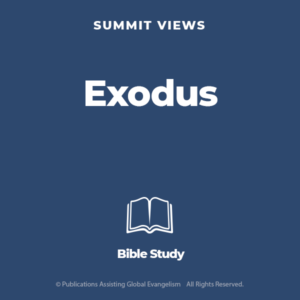
Summit Views: Exodus
$0.00 -
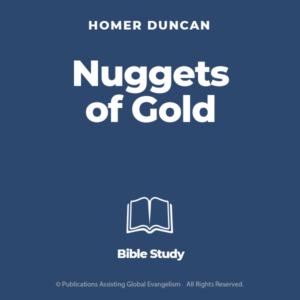
Nuggets of Gold
$0.00 -
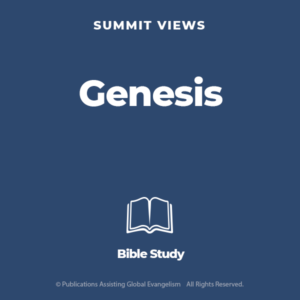
Summit Views: Genesis
$0.00 -
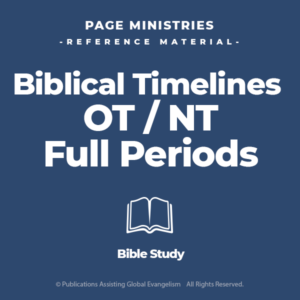
Biblical Timelines – OT/NT Full Periods
$0.00 -
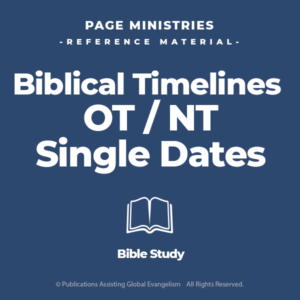
Biblical Timelines – OT/NT Single Dates
$0.00 -
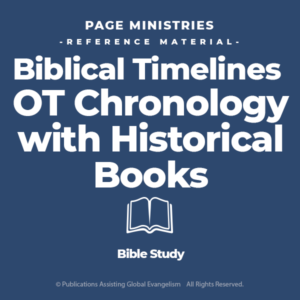
Biblical Timelines – OT Chronology with Historical Books
$0.00 -
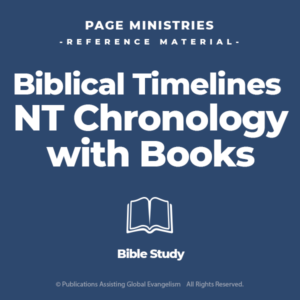
Biblical Timelines – NT Chronology with Books
$0.00 -
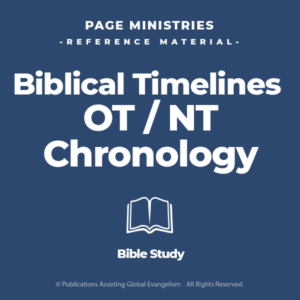
Biblical Timelines – OT/NT Chronology
$0.00 -
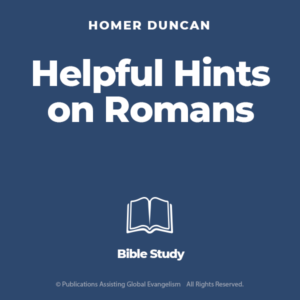
Helpful Hints on Romans
$0.00



